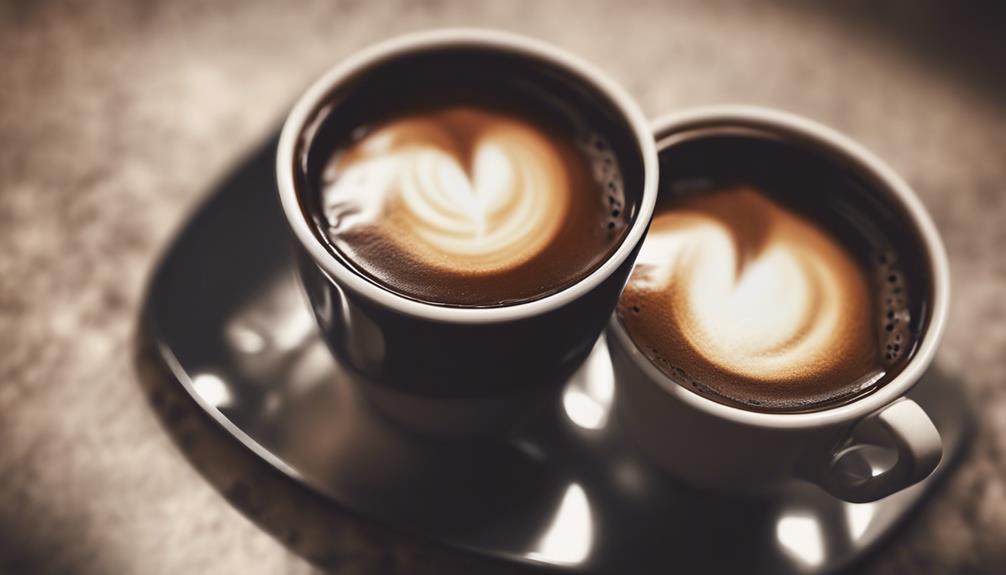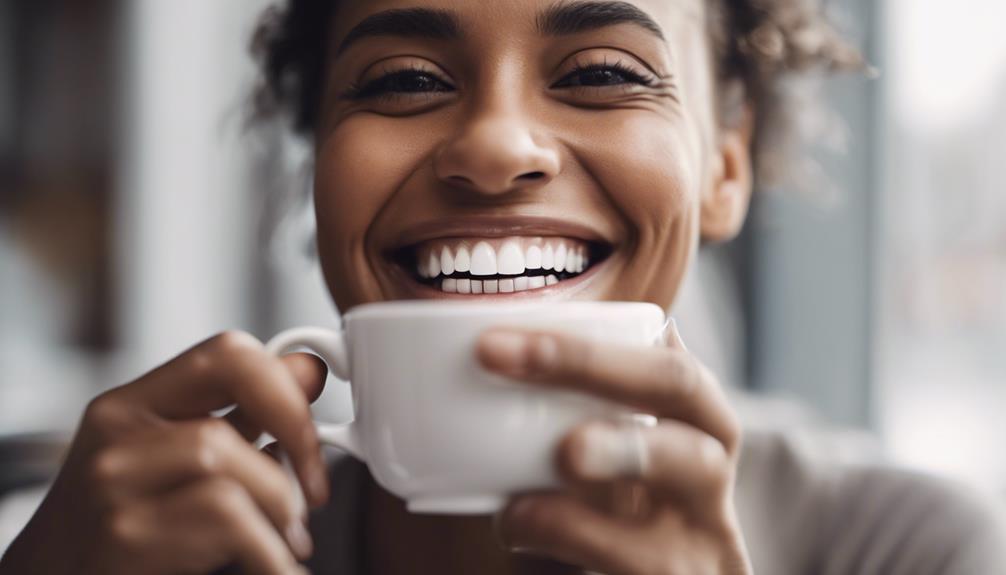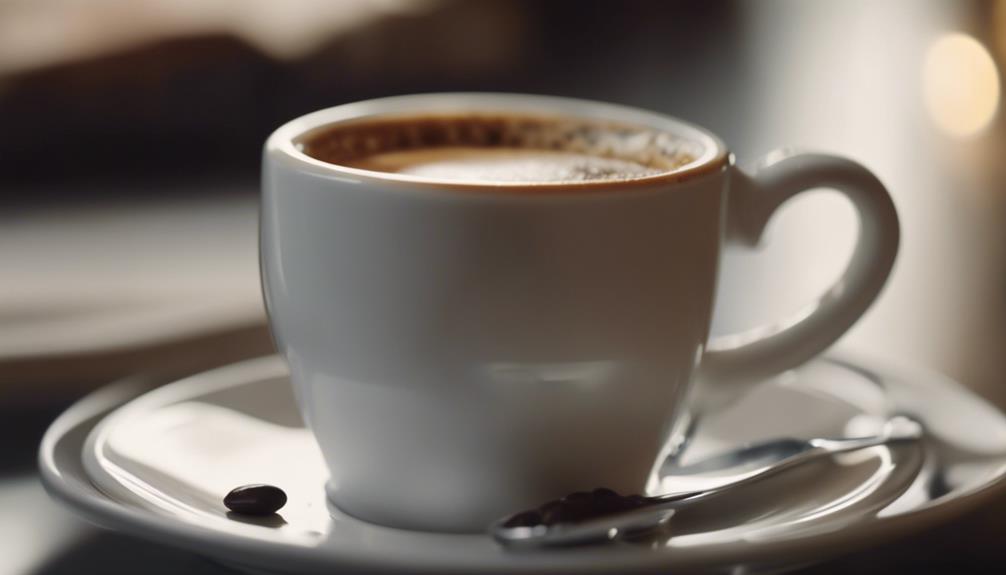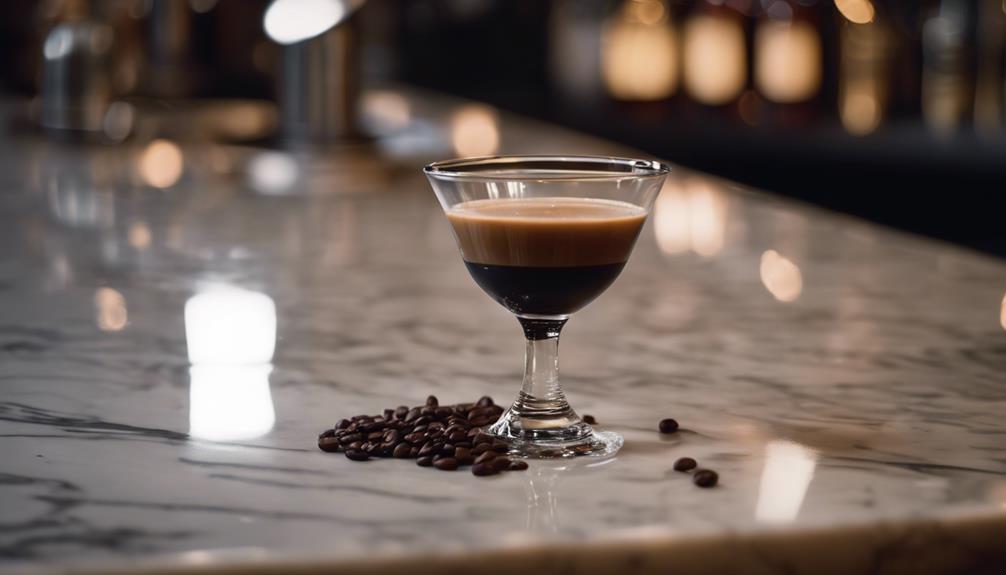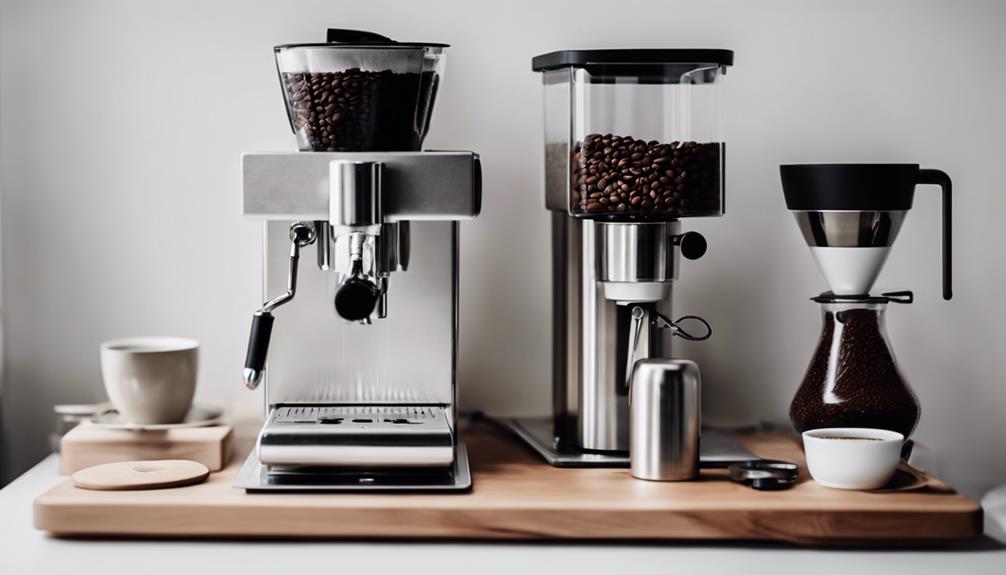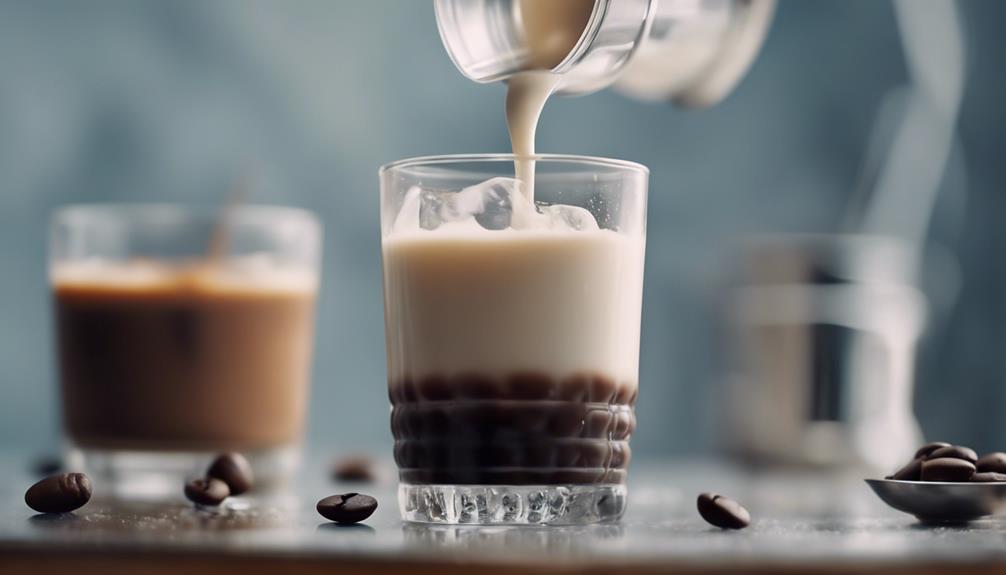In the coffee world, espresso and doppio are distinctly different. Espresso is a single shot with a strong flavor, containing 7 grams of coffee, while a doppio is a double shot with 14 grams for a bolder taste. The brewing method for espresso uses 7-9 grams of coffee, while doppio doubles that amount. In terms of taste, espresso provides a balanced strength, while doppio delivers a more powerful punch. When it comes to caffeine, doppio has twice the kick. To learn more about the differences between these two coffee treats, delve deeper.
Key Takeaways
- Doppio is a double shot of espresso, containing 14 grams of coffee, while espresso is a single shot with 7 grams.
- Doppio offers a more robust and intense coffee experience with double the caffeine content compared to espresso.
- Espresso has a balanced strength and moderate caffeine, while Doppio packs a stronger taste punch.
- The brewing process for Doppio involves double the amount of coffee grounds and water for a concentrated flavor.
- Doppio is favored for its potent flavor profile, while espresso is known for its versatility in creating various coffee drinks.
Espresso: Definition and Characteristics
Espresso, a strong and concentrated coffee, is defined by the process of forcing hot water through finely-ground coffee beans. It's known for its intense flavor and velvety texture, making it a favorite among coffee enthusiasts.
Typically served in small shots, a single shot of espresso contains 7 grams of coffee and less caffeine than a regular cup of coffee. However, if you're looking for an extra kick, you can opt for a double shot of espresso, which uses 14 grams of coffee to pack a more robust punch.
This double shot of espresso provides a bolder flavor profile and a stronger caffeine boost, perfect for those who need a quick pick-me-up. Despite its small size, espresso is a versatile base for various coffee drinks like lattes, cappuccinos, and macchiatos.
When properly extracted, espresso also boasts a thick, creamy layer of crema on top, adding a touch of elegance to each sip. So whether you prefer a single or double shot, espresso offers a delightful coffee experience that's both bold and sophisticated.
Doppio: Unveiling the Double Shot
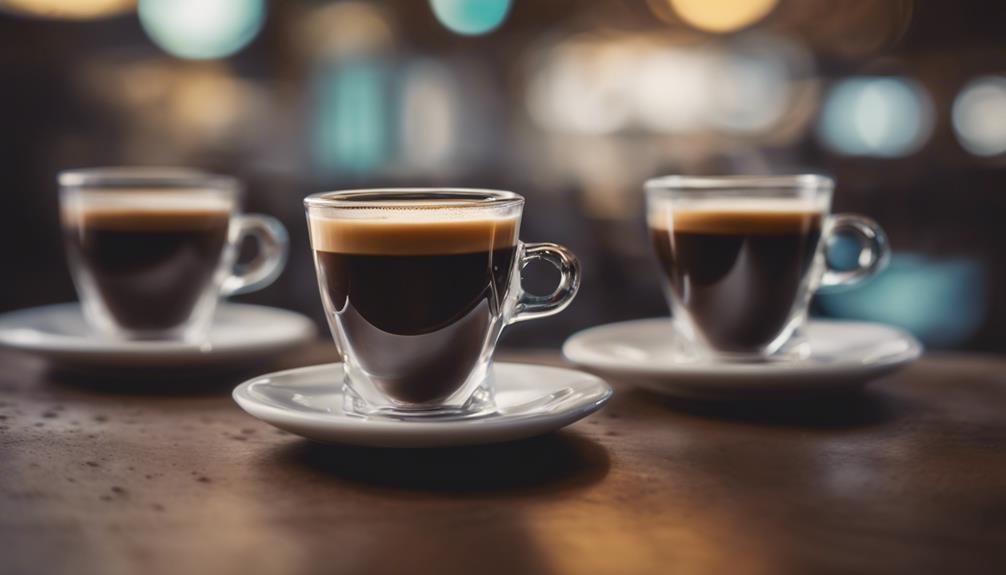
Revealing the double shot known as a doppio exposes a potent and robust coffee experience. A doppio is essentially two single espresso shots combined into one, delivering a concentrated flavor punch.
With 14 grams of coffee used, the doppio yields around 60ml of liquid, making it a powerhouse of taste and caffeine. Despite its nature, the doppio maintains the same extraction time as a single espresso shot, ensuring a well-balanced and rich coffee profile.
It's no wonder that the doppio is favored by many for its stronger taste and higher caffeine content. This double shot option caters to those seeking a more robust coffee experience in a single serving.
Brewing Process Variations
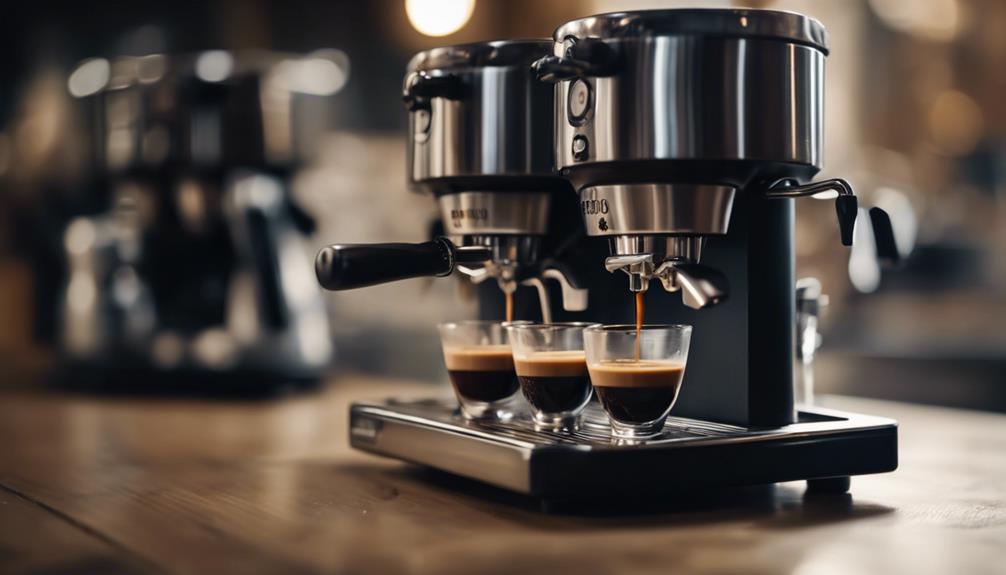
Investigating the brewing process variations between a classic espresso and a doppio reveals the distinct methods utilized to create these coffee delights.
When comparing the brewing process of espresso and doppio, some key differences emerge:
- Coffee and Water Ratio: Espresso is made with a single shot of coffee using 7-9 grams of grounds and 25-30 ml of water, while a doppio consists of a double shot with twice the amount of coffee and water, resulting in a stronger flavor profile.
- Portafilter Dosing: The brewing process for espresso involves using a single dose of coffee grounds in a portafilter, whereas a doppio requires a double dose to achieve a more concentrated taste.
- Extraction Time: Espresso has a shorter extraction time compared to a doppio, leading to a faster brewing process for espresso shots. This quicker extraction contributes to the distinct characteristics of each coffee type.
Taste Test: Espresso VS Doppio
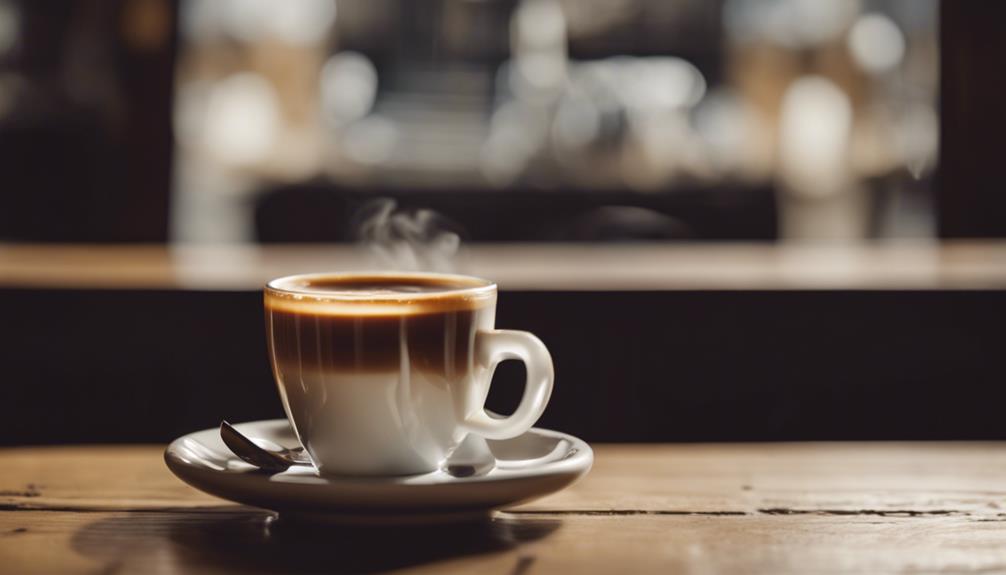
Compare the taste profiles of espresso and doppio to truly understand the nuances in flavor between these two coffee variations. Espresso, known for its intense flavor and rich crema, offers a concentrated and nuanced taste. On the other hand, Doppio provides a bolder and more robust coffee experience, with a stronger caffeine kick and a fuller coffee flavor. Below is a table summarizing the key taste differences between Espresso and Doppio:
| Attribute | Espresso | Doppio |
|---|---|---|
| Flavor Profile | Intense and nuanced | Bold and robust |
| Crema | Rich | Creamy |
| Strength | Balanced | Stronger |
| Caffeine Content | Moderate | Double the caffeine |
Espresso is favored for its balanced strength and flavor, while Doppio is preferred by those seeking a more intense coffee experience. Whether you enjoy the nuanced complexity of espresso or the boldness of Doppio, both options offer a delightful coffee experience tailored to different preferences.
Caffeine Content Comparison
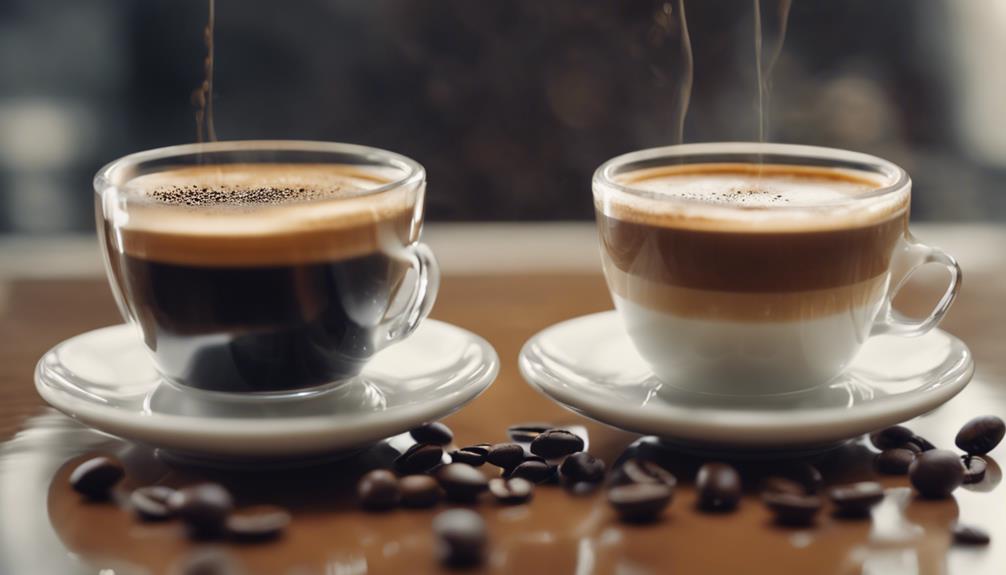
A doppio packs a caffeine punch, containing double the amount found in a standard espresso shot. This higher caffeine content can provide a more significant boost to your energy levels when needed.
Understanding the difference in caffeine concentration between these two espresso variations can help you choose the right one to match your energy requirements.
Caffeine Concentration Difference
When comparing the caffeine content between a standard espresso shot and a doppio, you'll find a notable difference in their caffeine concentration levels. Here's why:
- Double the Caffeine:
A standard espresso shot contains about 60-100mg of caffeine, while a doppio (double espresso) typically has double that amount, ranging from 120-200mg.
- Increased Coffee Grounds:
The higher caffeine content in a doppio is due to using twice the amount of coffee grounds compared to a single espresso shot, leading to a more robust caffeine concentration.
- Enhanced Strength:
The caffeine concentration difference between espresso and doppio can impact the overall strength and intensity of the coffee flavor. Opting for a doppio over a regular espresso shot can provide a more potent dose of caffeine for those seeking a stronger boost.
Impact on Energy Levels
The difference in caffeine content between a standard espresso shot and a doppio can noticeably affect your energy levels and overall alertness. A standard espresso contains 60-100mg of caffeine, while a doppio (double shot) can pack a punch with 120-200mg of caffeine.
This higher caffeine content in a doppio translates to a stronger energy boost compared to a regular espresso shot. If you need a more pronounced effect on alertness and focus, opting for a doppio might be the way to go. However, individuals sensitive to caffeine should be cautious with doppio consumption due to its potent energy-enhancing properties.
Understanding the caffeine disparity between espresso and doppio shots is important for making informed choices based on your desired energy levels. So, whether you're looking for a gentle pick-me-up or a robust jolt of energy, knowing the caffeine content differences between espresso and doppio can help you tailor your coffee choice to your energy needs.
Serving Sizes and Presentation
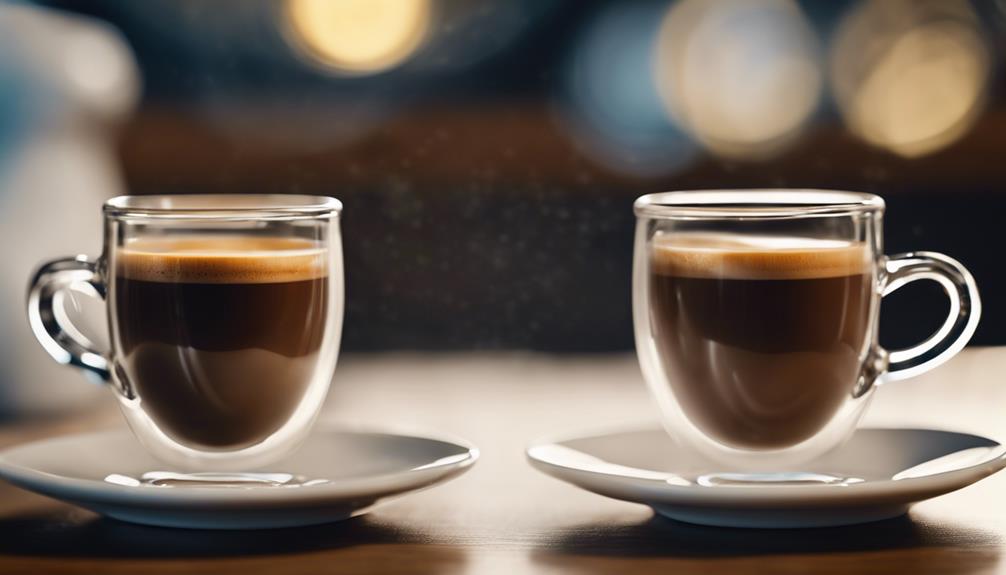
In coffee culture, the serving sizes and presentation of espresso and doppio play a significant role in distinguishing between the two beverages. When it comes to doppio:
- A doppio is a double shot of espresso served in one demitasse container, providing a larger serving size compared to a regular espresso shot.
- Doppio typically contains 60ml of coffee, offering a stronger flavor profile due to its doubled volume compared to a standard espresso shot.
- The presentation of a doppio showcases its larger serving size and caters to those seeking a bolder coffee taste, making it ideal for individuals with a preference for a more intense coffee experience.
These differences in serving sizes and presentation highlight the unique characteristics of the doppio, emphasizing its role in coffee culture as a beverage that stands out for its boldness and intensity.
Flavor Profiles: Boldness Vs Intensity
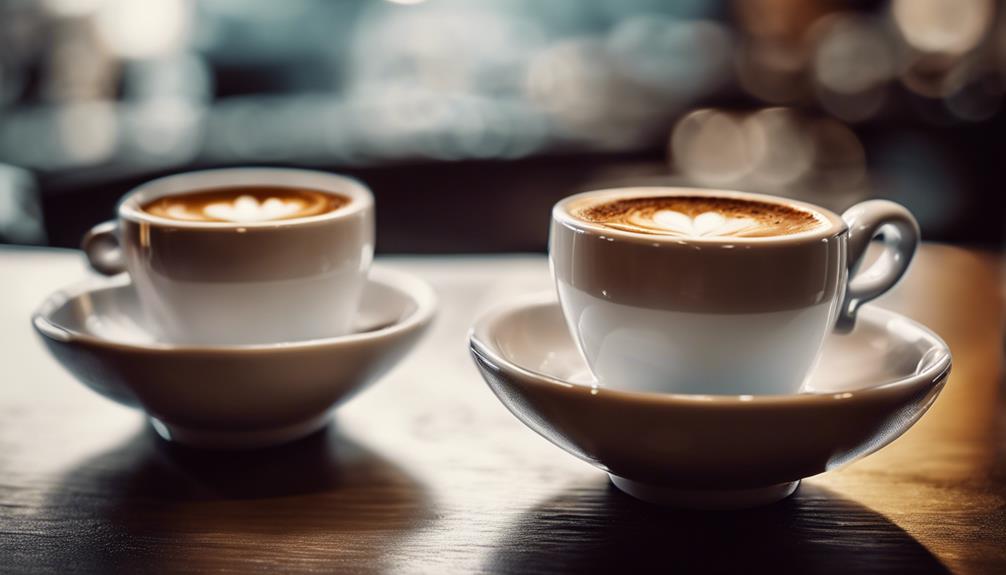
Comparing the flavor profiles of Espresso and Doppio reveals a distinct contrast in boldness and intensity levels. Espresso is known for its bold and rich flavor, offering a balanced taste with a strong coffee essence. On the other hand, a Doppio, being a double shot of espresso, provides a more intense and concentrated flavor experience, amplifying the coffee concentration for a robust and powerful coffee sensation.
To further understand the differences in flavor profiles between a single shot of Espresso and a Doppio, let's examine the key characteristics in the table below:
| Flavor Profile Feature | Espresso (Single Shot) | Doppio (Double Shot) |
|---|---|---|
| Coffee Essence | Strong coffee taste | Amplified coffee concentration |
| Intensity | Bold | Intense and robust |
| Richness | Balanced | Pronounced |
| Experience | Flavorful single shot | Double the coffee punch |
The table clearly illustrates how a Doppio, with its intensified richness and boldness, offers a more potent coffee experience compared to a single shot of Espresso.
Popular Culture Preferences
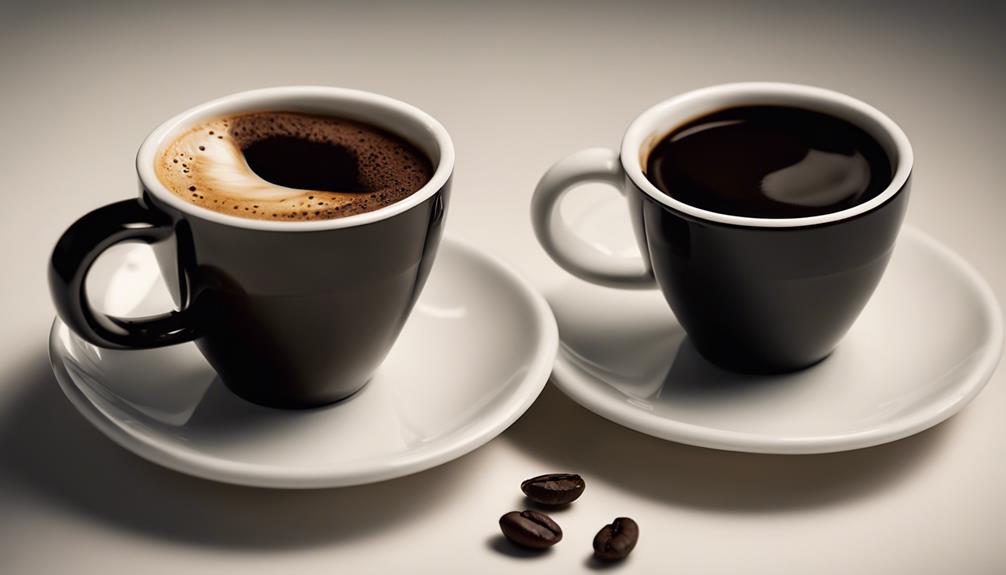
In popular culture, espresso and doppio have distinct followings based on cultural coffee trends, social media influence, and celebrity endorsements.
Espresso's association with sophistication and quick energy boosts often makes it a favorite in trendy urban coffee shops and Italian cafes worldwide.
On the other hand, doppio's appeal lies in its stronger coffee flavor and intense caffeine kick, attracting coffee enthusiasts who appreciate bold and concentrated tastes.
Cultural Coffee Trends
Amidst popular culture's evolving coffee preferences, espresso and doppio have emerged as key players in the domain of specialty coffee consumption.
When observing cultural coffee trends, you'll notice the following:
- Espresso's Quick Energy Boost: Espresso is often linked to providing a quick pick-me-up and is deeply rooted in Italian coffee culture, appealing to those seeking a swift caffeine fix in a busy world.
- Doppio's Intense Flavor Profile: The doppio, a double shot of espresso, caters to individuals desiring a more robust coffee experience with a higher caffeine content, making it a preferred choice for those who appreciate a stronger flavor profile.
- Urban Coffee Shop Preference: Cultural shifts show a clear preference for espresso in trendy urban coffee shops and specialty cafes, signifying a move towards quality coffee consumption and a growing interest in artisanal coffee preparation methods that enhance the overall coffee experience.
Social Media Influence
With social media's pervasive influence on popular culture preferences, espresso and doppio shots have become central points in the digital coffee landscape, engaging audiences with their distinct characteristics and visual appeal.
Social media influencers often showcase doppio shots for their aesthetic appeal and perceived sophistication in coffee culture, while espresso shots are commonly featured in trendy coffee shops and cafes on platforms like Instagram and TikTok.
Doppio shots are favored by coffee connoisseurs for their double serving size and intensified flavor profile, making them a popular choice for espresso enthusiasts. Espresso shots are frequently used as a base for creative latte art designs, whereas doppio shots are highlighted for their rich and bold flavor in social media posts.
Social media users often engage in discussions comparing espresso vs doppio shots, delving into taste preferences and caffeine content in these espresso variations, creating a lively online dialogue around these beloved coffee options.
Celebrity Endorsements
Celebrity endorsements play a significant role in shaping popular culture preferences for espresso and doppio shots, highlighting the allure and sophistication of these espresso variations.
When it comes to doppio shots:
- Celebrities' Choice: Celebrities like Taylor Swift have shown a preference for doppio shots due to the stronger flavor and higher caffeine content provided by a double shot of espresso.
- Incorporation in Cuisine: Celebrity chefs such as Gordon Ramsay have integrated doppio shots into their recipes, emphasizing the importance of espresso in their culinary creations, further popularizing this espresso variant.
- Cultural Influence: The rise of espresso culture, propelled by celebrity endorsements of doppio shots, has made these coffee beverages trendy and appealing to a broader audience, showcasing the enjoyment and artistry of espresso consumption in popular culture.
Making the Right Choice
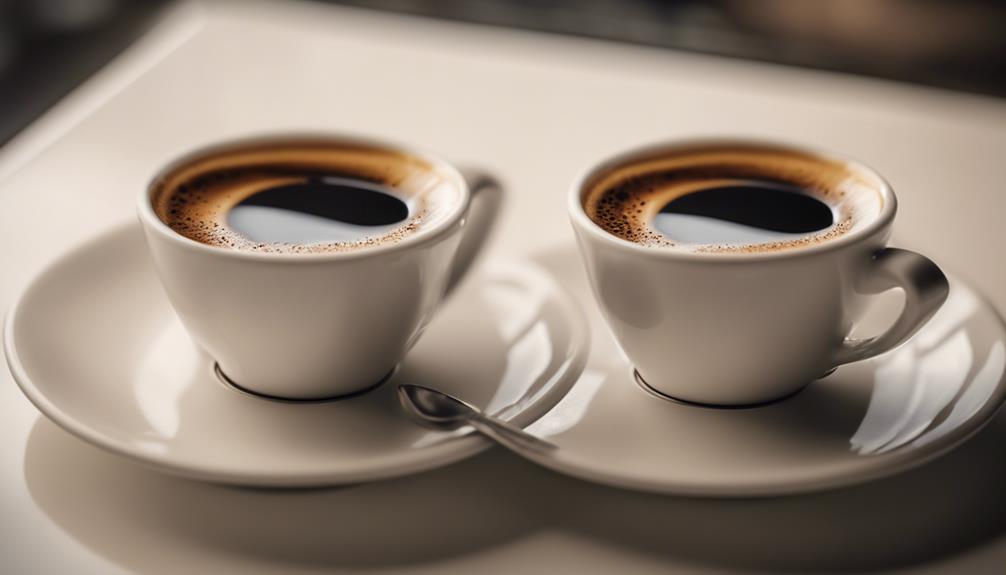
Choosing between espresso and doppio boils down to personal preference, emphasizing the importance of understanding your desired coffee experience. If you prefer a quick and intense caffeine kick in a small serving, espresso might be your go-to choice. Espresso, a single shot of concentrated coffee, delivers a bold flavor with 7-9 grams of coffee packed into 25-30 ml of liquid.
On the other hand, if you crave a richer and more robust coffee experience, the doppio, a double shot of espresso, might be the ideal option for you. With double the amount of coffee and water, the doppio offers a stronger and more concentrated taste in a single demitasse container.
Consider your taste for coffee strength and flavor when deciding between espresso and doppio. Whether you lean towards the quick jolt of espresso or the intensified richness of a doppio, understanding these differences can guide you towards making the right choice for your coffee enjoyment.
Frequently Asked Questions
What Is the Difference Between Doppio and Espresso?
When comparing doppio and espresso, the key difference lies in their quantity and strength.
A doppio consists of a double shot of espresso, offering a more intense coffee experience as it contains twice the coffee and water of a regular espresso.
In contrast, espresso is a single concentrated shot made with specific coffee and water measurements.
Opt for a doppio if you crave a stronger coffee flavor or more caffeine in a single serving.
Is Double Espresso Stronger Than Espresso?
Yes, a double espresso is stronger than a single espresso in regards to caffeine content and flavor intensity.
With twice the amount of coffee and water, a doppio delivers a more robust and concentrated taste profile.
However, the strength increase isn't directly proportional to the volume, so while a double espresso offers a bolder coffee experience, it may not always taste notably stronger than a regular espresso due to flavor balance during extraction.
Is Lungo the Same as Doppio?
Lungo and Doppio differ in their preparation and taste profiles. Lungo is a long espresso that involves increasing the water without adding more coffee, resulting in a milder taste. On the other hand, Doppio is a double shot with a higher coffee-to-water ratio, offering a bold and intense flavor. The key distinction between the two lies in their extraction time. Despite both using similar amounts of coffee, Lungo and Doppio cater to different preferences in terms of espresso strength and flavor.
These differences make it clear that Lungo is not the same as Doppio.
What Is the Ratio of Espresso to Doppio?
The ratio of espresso to doppio is typically 1:2. An espresso is a single shot, while a doppio is a double shot. Espresso uses 7-9 grams of coffee and yields 25-30 ml of liquid.
In contrast, a doppio uses 14-18 grams of coffee and produces around 60 ml of liquid. The doppio is known for its stronger flavor and higher caffeine content, making it a popular choice for a more intense coffee experience.
Are Espresso and Expresso the Same Thing or Different?
The espresso pronunciation debate has been ongoing for years. Some say “espresso” with an “s,” while others pronounce it as “expresso” with an “x.” However, it’s important to note that “espresso” is the correct term for the strong, concentrated coffee drink. Expresso is simply a common mispronunciation.
Conclusion
To sum up, when it comes to espresso vs doppio, the main difference lies in the serving size and intensity of flavor.
While espresso offers a strong, concentrated shot of coffee, doppio provides a double dose of that bold taste.
Making the right choice between the two ultimately depends on your preference for a quick pick-me-up or a more robust coffee experience.
Remember, the proof is in the pudding, so go ahead and take your pick to start your day on the right foot.
